Occipital condyle screw insertion
1. Preoperative measurements
Preoperatively it is helpful to measure the expected length of the occipital condyle screw on a CT scan. This measurement can help to guide the depth of the drilling.
Mean occipital condyle width is 11 mm and mean condylar length is 25 mm.
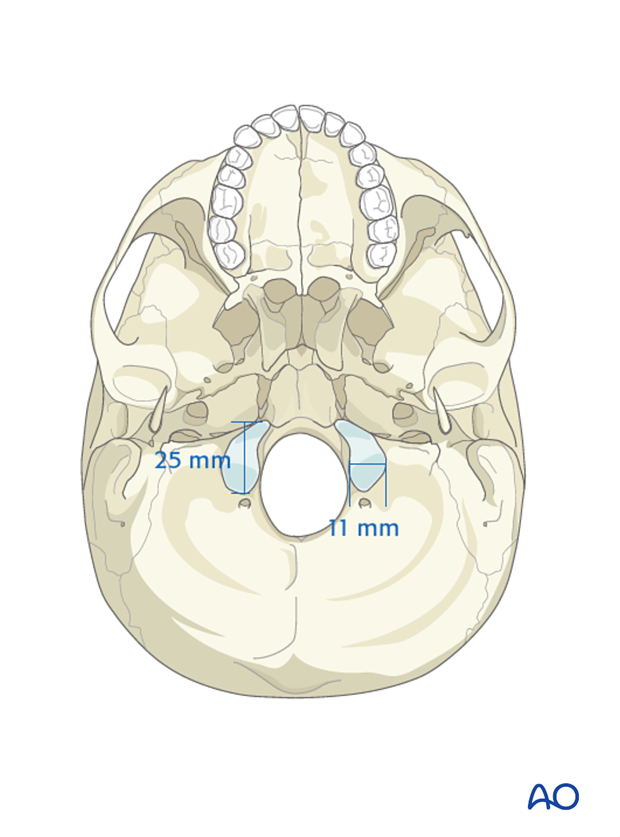
The occiput and the lateral aspect of the foramen magnum are identified.
Dissect to the ridge between the skull and the occipital condyle.

2. Screw entry point
The screw entry point is located 5 mm lateral to the foramen magnum, just inferior to the ridge running laterally from the foramen magnum.
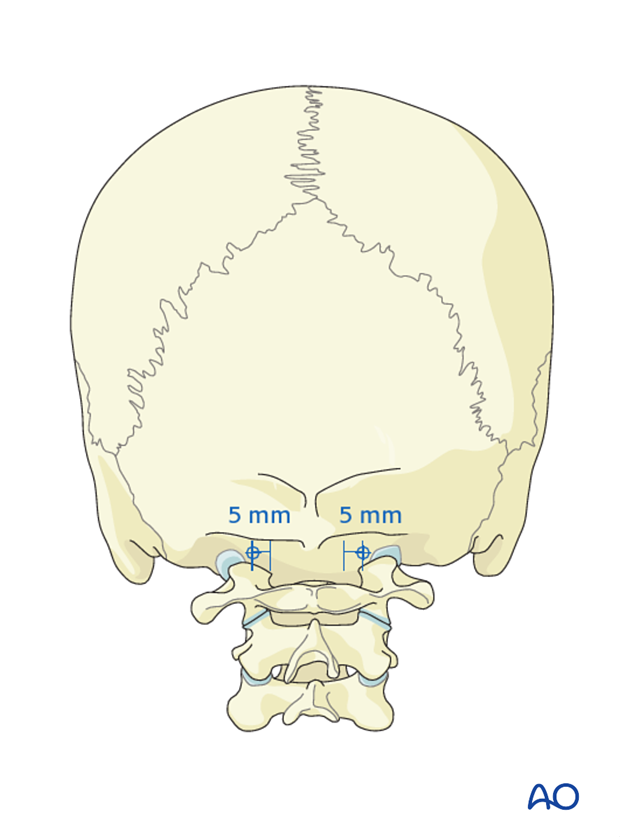
3. Screw trajectory
The screw is angled 15° medially and 5° cranially.
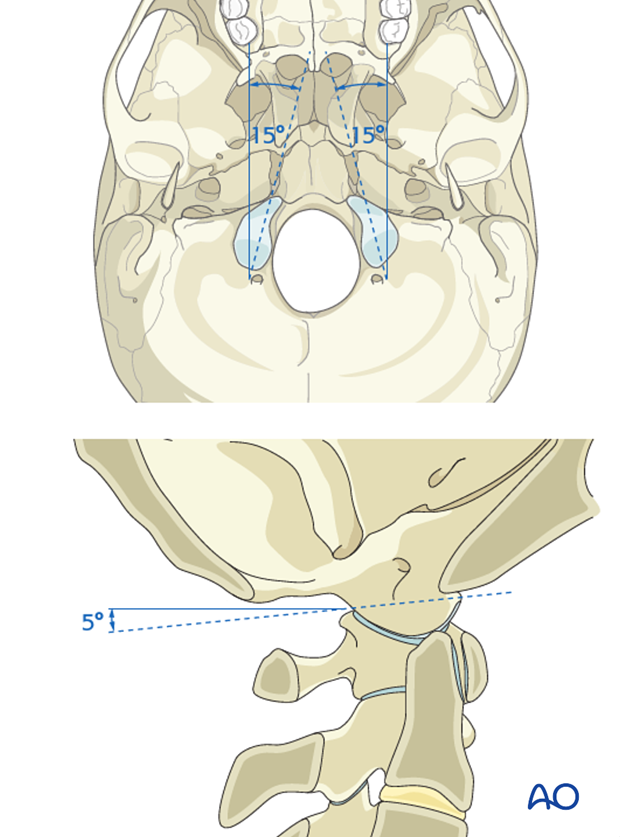
4. Screw
The length of screw anchored in bone is typically 22 mm, with an additional 10–12 mm (a total of 32–34 mm) dorsal to the bone in order to line up the screw head with the C1 lateral mass screw. The part of the screw which is not inserted in the bone should have a smooth shaft in order not to irritate the vertebral artery.
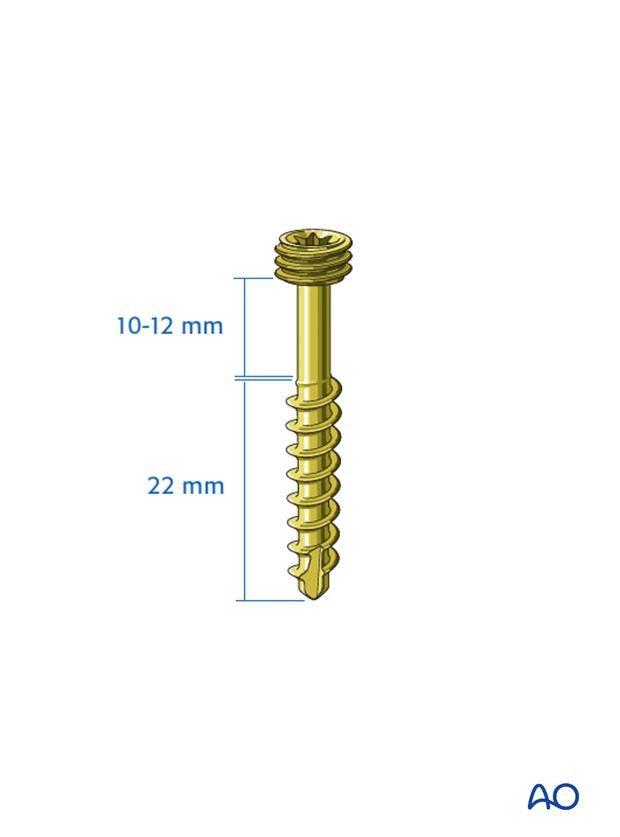
5. Drilling
Set the drill guide length to 20 mm and drill into the posterior aspect of the occipital condyle. With the drill in place, take a lateral x-ray to assess the proper length of the screw. The tip of the occipital condyle screw should not be more anterior than the tip of the dens.
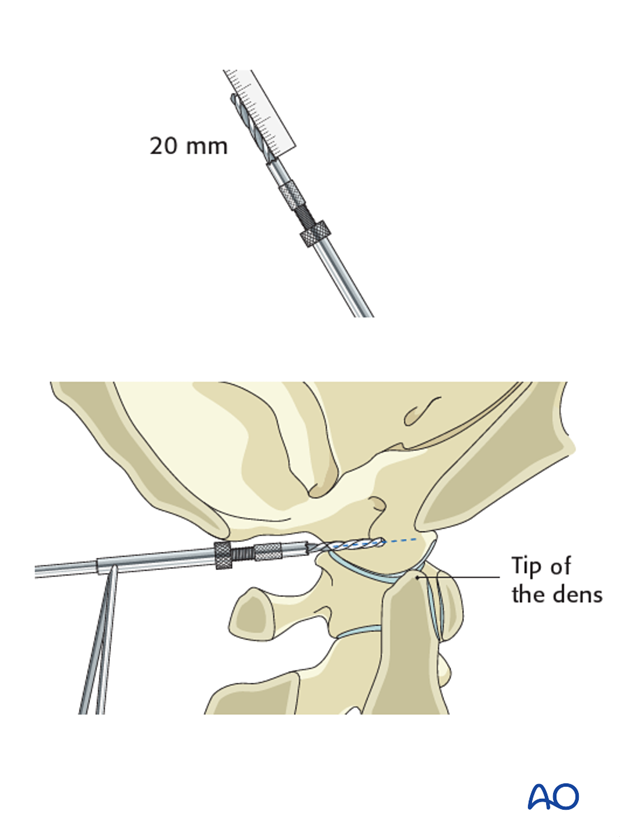
6. Screw insertion
Tap and measure the length. Insert the screw under fluoroscopic guidance, as needed.














